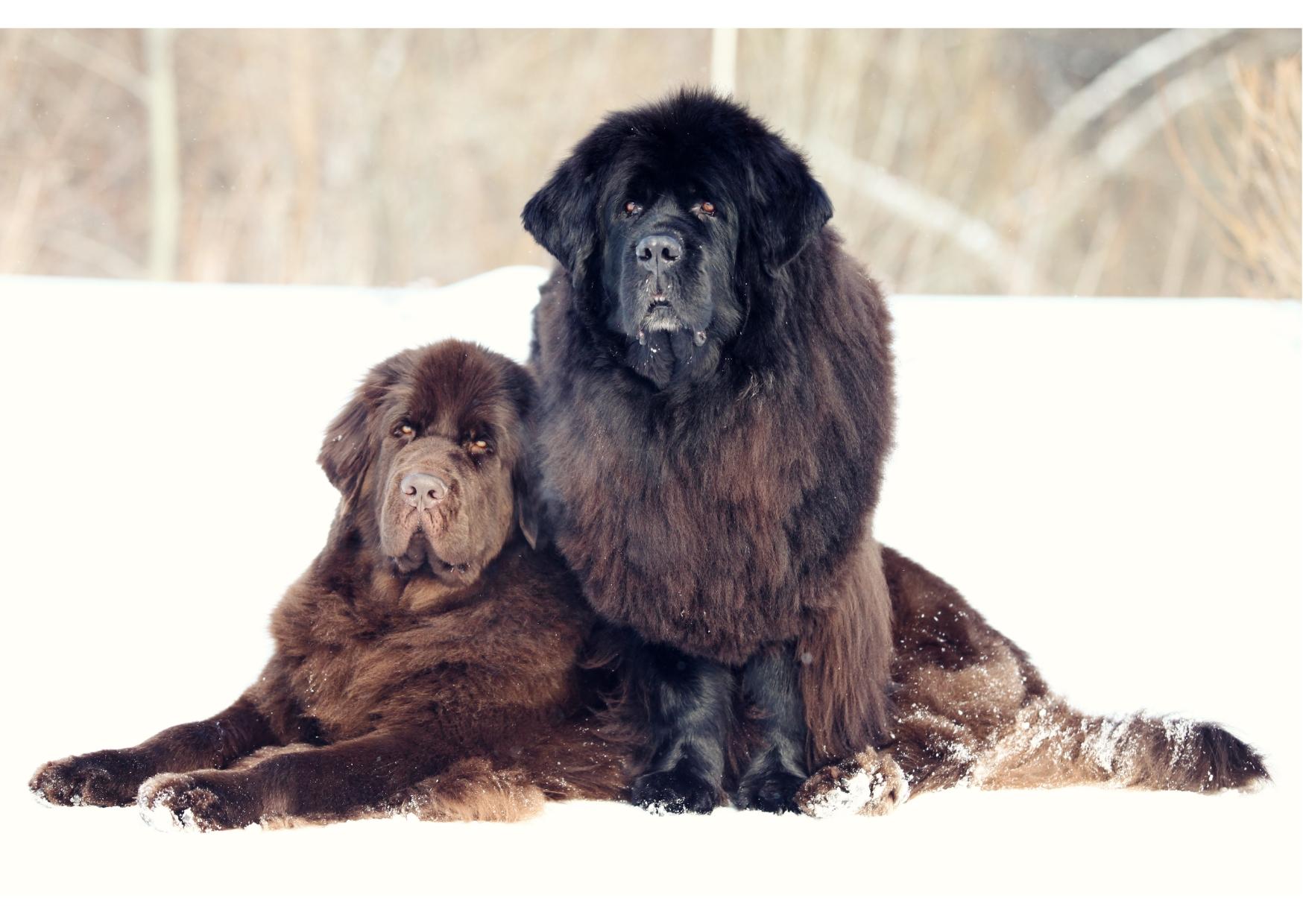NEWFOUNDLAND
| Group: | Working |
|---|---|
| Size: | Giant |
| Temperament: | Sweet, loyal, and devoted |
| Height: | 26-28 inches (male), 25-27 inches (female) |
| Weight: | 55-70 Kg (male), 45-60 Kg (female) |
| Life Expectancy: | 9-11 years |
| Origin: | Canada |
| Coat Length: | Medium |
| Coat Type: | Double |
| Color: | Black Brown Gray Black & White |
About
Newfoundland dogs are big, strong, and heavy-boned with a thick double coat that is normally black, brown, or grey. They have a broad head, strong jaws, and expressive eyes.A colossal, but gentle and friendly dog who loves swimming, the true origins of the Newfoundland dog are unknown, despite the fact that it is often linked to the Canadian province of the same name. Today, it is occasionally used for sea rescues; historically, it was used by fishermen to retrieve nets. The breed is renowned for being kind to children and for having a protective nature. This dog cannot be a pet in a small home due to its large size.
Nutrition
Newfoundlands need a balanced diet of protein, fat, carbohydrates, vitamins, and minerals for their health and energy. A high-quality dog food for large breeds can provide the necessary nutrients, and fresh fruits and vegetables as occasional treats offer extra nutritional benefits. However, excessive treats can lead to obesity, a common problem for this breed. Newfoundlands are also prone to bloat, a life-threatening condition. Eating several small meals throughout the day and avoiding strenuous exercise before meals may help prevent it.
Ideal Meal Breakdown
Protein
26
Fat
15
Carbohydrates
51
Others
8
Exercise
The Newfoundland is a versatile dog that is comfortable both on land and in water. He is a loyal friend and a skilled draughtsman with a natural knack for saving lives. To stay healthy and happy, Newfoundlanders should engage in at least a half-hour of moderate exercise every day. Although they are undoubtedly meant to live indoors with their human family, Newfs enjoy being outside, especially when swimming. They also make excellent walking or hiking partners. Some Newfoundlans even take part in carting and drafting competitions because they enjoy pulling a cart. Agility, dock jumping, flyball, herding, obedience, rally, and tracking are additional canine sports in which Newfies compete and excel.
Grooming
Because of its thick coat, Newfoundlands should at least once a week receive a thorough brushing. A thorough combing with a long-toothed comb and slicker brush will remove dead hair and stop mats from forming. However, spayed and neutered Newfs shed all year long and will likely need to be brushed out several times per week. During shedding season, which typically happens twice a year, these will turn into daily sessions. Regular nail trimming is advised for all breeds because excessively long nails can be uncomfortable and problematic structurally.
Training
The Newfoundland puppy is confident, perceptive, and curious—never fearful, wary, or hostile. Any Newfie needs to interact with people on a daily basis. Early socialisation and puppy training sessions are advised to help the Newfoundland develop into a well-mannered, well-adjusted pet. By the age of four months, a puppy who will be trained for water work should be gradually introduced to the water. Newfoundlands are generally simple to train and eager to please. They are also loving and trustworthy; they take gentle direction well but do not take well to harsh corrections or training techniques.
Health
Newfoundlands are typically healthy dogs, but like other breeds, they are prone to some health problems. Arthritis and lameness can result from hip and elbow dysplasia, a disorder in which the joints don't develop properly. Also, they are more prone to heart disease and bloat, a potentially dangerous condition in which the stomach twists and expands. Because they are prone to obesity, Newfoundlanders' joints and organs may be subject to additional stress. A balanced diet and regular exercise are crucial for maintaining their health. Their health may be maintained with regular veterinarian examinations and preventative treatment, such as vaccinations and parasite control.
History
Newfoundlands are superb shipboard working dogs with a penchant for risky water rescues, and Canadian fishermen have traditionally relied on them for this job. Newfoundlands are natural swimmers, with partly webbed feet and the might to save a grown man from drowning. In terms of their ability to save people, Newfoundlands are to the icy waters of the North Atlantic what Saint Bernards are to the Alps. Newfoundlanders also made a living by dragging fishing nets to the shore and carrying the day's catch to the market. Although Newfoundland's days as a seagoing deckhand are mostly in the past, it is still thought of as the best water rescue dog and is utilised in that capacity all over the world.
